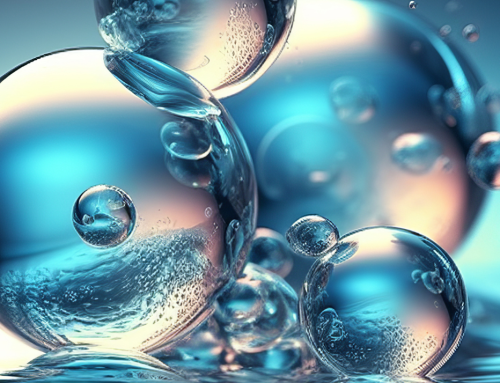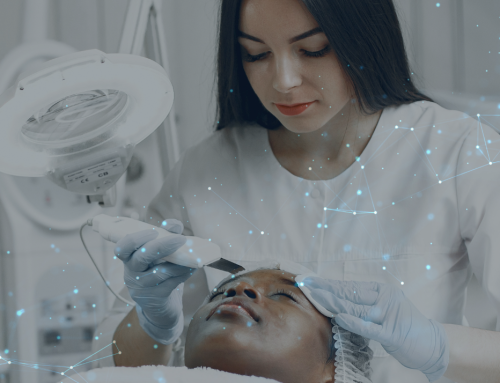Stem Cell Molecules: What are they? What makes them useful as an ingredient in skin care products?
Stem cell molecules have become increasingly popular as an ingredient in skincare products due to their ability to repair, regenerate and protect skin cells, and to modulate the immune system, as well as, reduce inflammation. What are stem cell molecules and why are they so effective? Are all stem cells, and hence their molecules, the same? To answer these questions, let’s explore the different types of stem cells, look into some key historical and scientific discoveries that have shaped the role of stem cells in modern-day skin care, and uncover how stem cell molecules are used to create effective skin care treatments.
Let’s start by getting a basic understanding of stem cells.
Stem Cells Defined
The human body contains many cells that do different jobs. These are called differentiated cells. A stem cell is a cell that has not yet been programmed to do a specific job.
There are two types of stem cells:
- Embryonic
- Somatic, or Adult Stem Cells.
The former comes from 3-5 day old embryos. These cells are very important for medical research because they can turn into any type of cell found in the body.
Adult stem cells are found in most adult tissue and are used by the body for growth, maintenance, and repair. These cells help heal and maintain our bodies during both their normal, daily functions as well as after an injury. Because they are sourced from fully developed adults, there are no ethical issues with using adult stem cells. The use of these cells has been universally accepted, approved, and deemed safe by the scientific and medical communities. Therefore, it’s the somatic, or adult stem cells that are commonly used in research and skin care today.
The important aspect of what you apply topically is what “type” of stem cell you deliver to the skin. Using “skin-resident” stem cells is key because these stem cells have naturally evolved to support the repair and regeneration processes in our skin throughout our lives (not stem cells from other parts of the body that serve functions other than to maintain and heal the skin).
Did you know the power is in the molecules the stem cells release, and not the stem cells themselves? The collection of molecules from the stem cells contains no genetic material and is composed mostly of a variety of proteins needed to maintain and heal the skin’s structure and function.
Stem cells turn into GF’s through the proper delivery system. NeoGenesis uses “skin-resident” adult human stem cells to produce molecules that are then protected and delivered by exosomes. Exosomes are smart nanospheres (similar to liposomes, but operate more efficiently), with an innate ability to easily diffuse through tissues, seek out target cells, and pass the brain-blood barrier. Without a stability system, growth factors will fall apart in the bottle or on the skin.
Stem Cell Science – A Brief History
Several scientific discoveries have led to more common uses in stem cell research, medical uses, and skin care techniques available today. As it relates to skin care, discoveries about skin stem cells have made it possible to harness the body’s natural regenerative power.
The history of stem cell molecule research dates back to the 1970’s and has since been a field of great interest for scientists.
In 1975, Drs. Howard Green and James Rheinwald at MIT made an important discovery about human keratinocytes, showing that they could be cultured. This led to further discoveries about tissue regeneration and how stem cells can be used in skin care treatments.
By 2008, Dr. Greg Maguire had developed the concept of Systems Therapeutics as a new way of thinking about pharmacological products which opened the door for advances in using stem cell released molecules.
Notice, we describe the “release” of molecules and not the “extraction” of molecules. Mother nature uses “released” molecules, which are fully formed molecules that are packaged into protective delivery vesicles known as exosomes (https://pubmed.ncbi.nlm.nih.gov/29312526/ ). Extracted molecules are cheaper to make, but are not very effective because they are not fully formed and are not packaged into the protective delivery vesicles (exosomes).
Dr. Maguire’s research on stem cells revealed that it’s stem cell released molecules, not the stem cells themselves, that provide 80% of the healing benefits to tissue. These molecules are the same molecules that the skin produces naturally on its own and in greater abundance when the skin is young and healthy. In the lab, Dr. Maguire discovered that stem cells are able to release these molecules. Scientists had learned to do what Mother Nature had been doing all along – targeting the specific parts of the body that needed repair and regeneration.
But are all adult stem cells alike in their ability to heal the skin? The short answer is no. Dr. Elly Tanaka (https://www.imp.ac.at/groups/elly-tanaka/) first conceptualized the idea of tissue-specific stem cells, and Dr. Maguire has found this concept to be critical for the safe and efficacious development of stem cell-based therapeutics (https://www.ncbi.nlm.nih.gov/pmc/articles/PMC8437473/).
In other words, therapeutics for the skin should use tissue-specific stem cells that are derived from the skin.
How Stem Cells Relate to Skin Care
The use of stem cell released molecules in skin care products offers a multitude of health benefits, as they can help to rejuvenate damaged tissue. By harnessing the power of adult stem cells and combining them with exosomes, scientists have been able to create a delivery system that is much more effective than using only stem cells themselves. This has allowed breakthroughs for chronic skin conditions like psoriasis, eczema, and dermatitis without the need for steroids or harsh chemicals.
Additionally, cancer patients going through chemotherapy and radiation have seen relief from pain, itching, irritation, and other side effects due to the natural powers of these molecules.
This technology can help you in two ways:
- Pre + During Treatment
Strengthening the skin barrier with S²RM® prior to, and during radiation treatments has proven to significantly reduce the amount of irritation, burning, and peeling of the skin through effective preparation. NeoGenesis case study participants have reported significantly less severe symptoms in their skin compared to other patients experiencing the same treatments.
- Post-Treatment
Is treatment already complete? It’s not too late! The skin is still in desperate need of nourishment post-treatment, and NeoGenesis is ready to deliver. Our S²RM® technology is derived from skin-resident molecules, which is a natural approach to healing as it mimics your body’s own rejuvenating mechanisms. It can be used on damaged, sensitive, and even scarred tissue to improve your quality of life post-treatment. This is called “systems therapeutics”, where we simply return to the tissue the molecules that were present when the skin was young and healthy.
The incredible advancements in stem cell science may indeed be the most instrumental and advantageous for cancer patients due to a stem cell’s ability to dramatically speed up skin rejuvenation, far beyond that of natural healing. Especially for cancer patients receiving chemotherapy and radiation treatments, the medications and radiation continue to damage their skin every single day. This makes it difficult for the skin to heal until treatment is complete without the right skincare routine.
Recent case studies suggest that cancer patients who used skincare products with stem cell released molecules before, during, and after treatment experience far less discomfort and damage to the skin throughout the entire course of their treatment.
Introducing these powerful molecules into a product can help mitigate damage from environmental stressors and help reduce irritation. NeoGenesis stem cell released molecules deliver to the skin all of the nutrients that were there when the skin was young and healthy to promote skin rejuvenation. The skin becomes stronger, healthier, and balanced.
With all these amazing benefits, it’s no wonder why so many people are turning to stem cell based skincare products.
To put it simply, stem cell-derived molecules are the future of skincare. They’re safe and free from hazardous genetic material when sourced from adult stem cells instead of embryonic ones. Thanks to advances in science, this has allowed for the development of naturally derived beauty products that can help with multiple skin conditions—ranging from chronic issues to cancer patients.
What is the difference between stem cells and growth factors?
Stem cells deliver growth factors. Growth factors are large proteins that float between cells communicating crucial messages relevant to growth, healing, and survival. Stem cells are cells with the ability to reproduce themselves and differentiate into various tissues, therefore potentially having a superior ability to stimulate collagen, elastin, and epidermis.
Human growth factors (HGFs) are made when cells from donor skin samples are fed a liquid, called a cell culture medium, which gives them all the essential vitamins and nutrients to thrive and secrete growth factors and cytokines. That complete mixture of growth factors contains vitamins, nutrients, and cytokines (everything our own cells make under normal wound-healing conditions in the body).
The Sourcing of NeoGenesis Stem Cells
NeoGenesis stem cells are ethically derived from healthy adult tissue donations, a process highly regulated through the FDA, to support a natural approach to healing; therefore, they do not use embryonic, bone marrow, or plant-derived stem cells. For example, research shows that bone marrow stem cells in skin care may cause rapid, but limited improvements in the skin at first, but with prolonged use, can cause an over proliferation of cells that may lead to accelerated aging, increased inflammation, and even cancerous development.
NeoGenesis products are abundant in the molecules that the skin already naturally produces. This methodology provides a natural approach to healing called “systems therapeutics”, where we simply return to the damaged tissue the many molecule types that were present when it was healthy.
Do you want to learn more about what NeoGenesis products can do for you? Follow NeoGenesis on Facebook, Instagram, TikTok, Twitter and YouTube.

NeoGenesis Australia
+61 (2) 82033339
info@NeoGenesisPro.com.au
www.NeoGenesisPro.com.au










